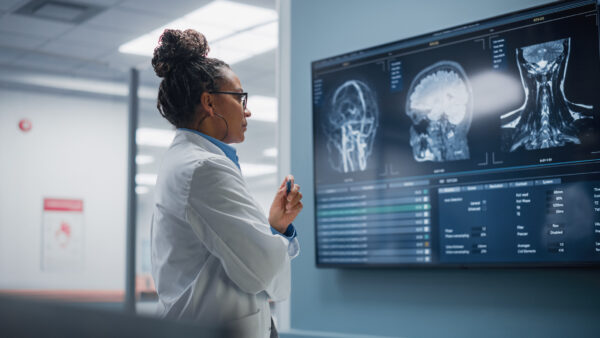Across industries, healthcare stands out not only for its direct impact on human life but also for its unique set of challenges and responsibilities. Among these, the modernization of legacy applications represents a particularly acute concern, more so than in any other sector. This article explores why legacy application modernization is a significantly bigger issue in healthcare compared to other industries and outlines strategic steps healthcare organizations can take to address this pressing challenge.
The Unique Challenges of Legacy Systems in Healthcare
The healthcare industry’s reliance on outdated legacy systems introduces a multitude of challenges that are uniquely critical due to the nature of the sector. These challenges underscore the imperative for modernization:
Patient Safety and Quality of Care
In healthcare, the stakes of IT inefficiencies can literally be life and death. Legacy systems often operate in silos, hindering the seamless flow of vital patient information. This can delay diagnoses, treatment plans and critical care decisions, directly impacting patient safety and the quality of care.
Regulatory Compliance and Data Privacy
Healthcare is subject to stringent regulations designed to protect patient data, such as HIPAA in the United States and GDPR in Europe. Legacy systems, developed long before these regulations were conceived, often lack the necessary controls and architecture to ensure compliance, exposing organizations to legal risks and penalties.
Interoperability Challenges
The ability to share health information across systems and providers is essential for coordinated care and patient safety. Legacy systems, however, typically lack interoperability, leading to fragmented patient records and inefficiencies that can affect patient outcomes.
Data Sensitivity and Cybersecurity Risks
Healthcare data is a prime target for cybercriminals due to its sensitive nature. Legacy systems, with outdated security features, are particularly vulnerable to breaches, putting patient privacy and institutional integrity at significant risk.
Cost and Resource Constraints
Maintaining and customizing legacy systems is costly and resource-intensive. This diverts funds and attention away from critical areas like patient care, innovation and adopting new technologies that can enhance service delivery and operational efficiency.
Addressing the Modernization Challenge: Steps for Healthcare Organizations
Recognizing the critical need for modernization, healthcare organizations must adopt a strategic and structured approach to update their legacy systems. Here are some critical areas to think about:
Comprehensive Assessment
The first step involves conducting a thorough assessment of existing legacy systems to identify which ones critically require modernization. This assessment should consider the impact on patient care, regulatory compliance and operational efficiency.
Strategic Planning
Develop a clear, strategic plan for modernization that aligns with the organization’s overall goals and objectives. This plan should prioritize systems for modernization based on their impact, considering both immediate needs and long-term strategic benefits.
Stakeholder Engagement
Modernization efforts must be inclusive, involving input and buy-in from all stakeholders, including IT staff, healthcare providers, administrators and patients. Effective communication and engagement strategies are essential to address concerns and ensure alignment with the needs and expectations of all parties.
Leveraging Cloud and Interoperability
Embrace cloud computing and interoperability standards to enhance flexibility, scalability and data sharing capabilities. Cloud solutions can offer secure, cost-effective platforms for hosting modernized applications, while interoperability standards ensure seamless data exchange across diverse healthcare systems.
Enhancing Cybersecurity
A critical component of modernization is strengthening cybersecurity measures. Adopting modern security technologies and practices can protect sensitive data and systems from evolving cyber threats, ensuring compliance with regulations and safeguarding patient privacy.
Change Management and Training
Effective change management strategies are crucial to facilitate the transition to modernized systems. Comprehensive training programs should be developed to ensure that healthcare providers and staff are equipped to utilize new systems effectively, minimizing disruption to patient care.
Partnerships and Collaboration
Consider partnering with technology vendors and consultants specializing in healthcare software modernization. These partnerships can provide valuable expertise, resources and support to navigate the complexities of modernization, from planning and implementation to ongoing maintenance and support.
The modernization of legacy applications in healthcare is not just a technical challenge; it’s a critical imperative that directly impacts patient safety, care quality and the overall efficiency of healthcare delivery. Given the unique challenges and high stakes involved, healthcare organizations must approach modernization with strategic planning, stakeholder engagement and a focus on security and interoperability. By addressing these challenges head-on, healthcare providers can ensure they are equipped to meet the demands of the digital age, delivering high-quality, efficient and secure care to their patients.

How AI Helped Me Think Like a Designer Before I Had One
When a UX gap threatened to slow a critical user flow update, our product team had no choice but to adapt. In this article, Director of Product Brittany Langosch discusses how although there's no substitute for a talented designer, using AI tools like ChatPRD and V0 can support fast collaboration and clear decision-making in a pinch.

Snowflake Summit 2025 Announcements
Snowflake Summit 2025’s latest announcements made it clear: the path to genuine AI-driven impact hinges on frictionless access to data, the ability to act on it with clarity, and absolute confidence in its protection. Learn more about how they're making that happen for customers in this article.

How ChatPRD Helps Build Better Stories (and a Stronger Team)
When user stories are vague, it slows down delivery, trust, and momentum. This article by Senior Product Strategy Consultant Traci Metzger shows how she used a lightweight, AI-guided system (ChatPRD) to write clearer, developer-ready requirements that actually accelerated execution.

QA in the Age of AI: The Rise of AI-Powered Quality Intelligence
As organizations push code to production faster, respond rapidly to new customer needs and build adaptive systems, the expectations on quality have changed. It's no longer enough to simply catch bugs at the end of the cycle. We’re entering an era where quality engineering must evolve into quality intelligence and organizations adopting quality intelligence practices are reporting measurable gains across key delivery metrics. Learn more in this article by Principal Engineer Jarius Hayes.
